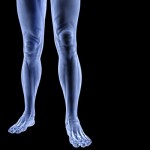Are You Standing on a Short Leg?

Many of my patients are utterly surprised when I tell them one of their legs is significantly shorter than the other. As their physical therapist, I know to be on the lookout for this because this sort of un-leveling may have caused, or is potentially compounding, the pain they have come in to be treated for.
In the general population, it’s not uncommon to have two legs of slightly different lengths. It becomes a matter of clinical significance, however, if that length difference is greater than one centimeter. At that point, the entire body is truly off-balance and must work hard at compensating for its unleveled nature.
There are two types of leg length discrepancies (LLDs): apparent and true.
Apparent LLDs are not actually an inequality in bone length. They are caused by joint dysfunction within the pelvis which makes the legs function (and measure) as if one were longer than the other. These pelvic problems are addressed with manual joint and soft tissue manipulation.
True LLDs are quickly leveled with the insertion of a heel lift.
Before one’s legs can be accurately measured for a true LLD, the treating practitioner needs to be sure that all joint dysfunction within the pelvis has been cleared. Once it’s been established that the pelvis is no longer an influencer, the true leg measurement can be taken (between two bony prominences, one on the front of the pelvis and the other on the inside of the ankle).
If a true LLD is discovered, the fix is very straightforward: halve the difference and place a small wedge under the heel of the shorter leg.
For example, if someone’s right leg measures to be or 1.2 cm longer than their left, then a .6 cm heel lift placed under the left heel will clinically correct the problem.
Now I know someone reading this MMHT is thinking, “So, why not correct the entire difference?” Good question. Two reasons—first, the spine, in its mature state, has often developed a fixed, compensatory curvature making it resistant to “change,” and second, it leaves some wiggle room for human error in measurement.